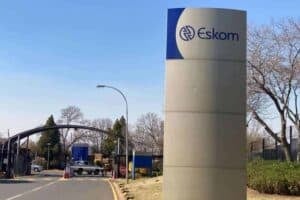Energy Minister Gwede Mantashe said his department won't stand in the way of renewable energy – but he's still pushing for the Karpowership deal.

After President Cyril Ramaphosa last week announced his plan to end load shedding in South Africa, ministers in the Energy Crisis Committee on Monday outlined how this would be done.
Minister in the Presidency Mondli Gungubele reiterated Ramaphosa’s plan to fix the state of Eskom and add new generation capacity.
The ministers included Gungubele, Public Enterprises Minister Pravin Gordhan, Mineral Resources and Energy Minster Gwede Mantashe, Minister of Forestry, Fisheries and Environment Barbara Creecy, Minister of Trade, Industry and Competition Ebrahim Patel and Minister of Police Bheki Cele.
Reduce load shedding
The ministers said the short-term objective is to reduce load shedding in South Africa. The long-term objective will then be to end load shedding and secure energy supply in the country.
Gungubele said they would focus on five areas to achieve this:
- Fix Eskom
- Improve generation supply.
- Speed up the procurement of new energy.
- Enable businesses and private homes to invest in solar power.
- Transform the electricity sector to achieve long term energy security.
ALSO READ: Ramaphosa’s plan to end load shedding: SA reacts
Maintenance
To boost generation, Gordhan said six power stations – Kendal, Majuba, Tutuka, Duvha, Kusile and Matla – have been identified for improvement in terms of maintenance.
This will, however, require finance – which the cash-strapped Eskom doesn’t have.
Finance Minister Enoch Godongwana said Eskom has not yet approached Treasury to cover the cost of maintenance.
He said Eskom’s generation division has already been given R8 billion for maintenance and another R2 billion is being considered.
Godongwana highlighted that Eskom’s debt is problematic – for the power utility and the country. He said Eskom’s debt is unsustainable and government will have to step in to resolve this.
Gordhan, however, was against government just throwing cash at Eskom. He said Eskom must first try find the money within its own resources. He said Eskom also needs to save money by looking at the excessive pricing charged by contractors.
ALSO READ: Eskom meets with business leaders to help end load shedding
Karpowership
Mantashe, despite the environmental and corruption concerns, is still hopeful that South Africa can procure energy from the Karpowership.
When asked if South Africa will go ahead with the Co-ownership deal, Mantashe said buying energy from power ships is not forbidden. He added that they will first need to comply with environmental assessments.
“Anything that is not forbidden is allowed,” he said.
Mantashe also said old coal-fired power stations will soon be decommissioned. They are likely to be repurposed with gas.
The Mineral Resources and Energy Minster also wants mining houses with excess energy to feed back into the national grid. There are, however, very few mining houses that have enough excess energy to do this at the moment, he said.
Mantashe and Godongwana have also asked for regulatory requirements to be waivered when it comes to Eskom to allow it to buy energy from the private sector.
ALSO READ: Environmental affairs blocks Karpowership’s ‘toxic’ advances
IPPs
Although government is looking at ways to get energy added to its grid through independent power producers, it will not be realised in the short term.
Gordhan said it could take between one and three years before this power is added to the grid.
He said Mantashe is responsible for ensuring that surplus power from IPPs is bought. Mantashe, a former National Union of Mineworkers (NUM) chairperson, has historically been against procuring renewable energy.
Solar energy
Others in government are seemingly in favour of renewable energy. Minister Patel said SA needs to get as much energy into the grid as it can, and as quickly as possible. Part of this plan is to include solar energy.
“It is important for the economy, growth, industrialisation and localisation ambition across the economy and all South Africans,” said Patel.
NOW READ: South Africa’s Just Energy Transition: Here’s what we know so far






